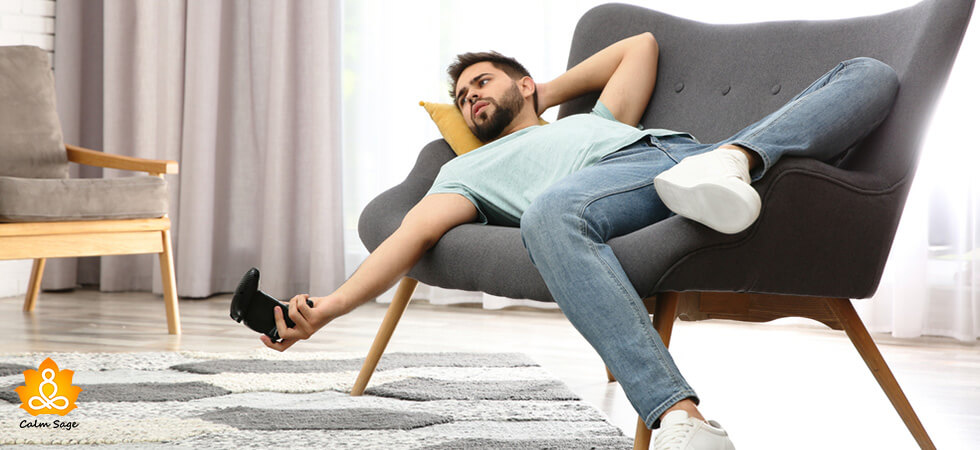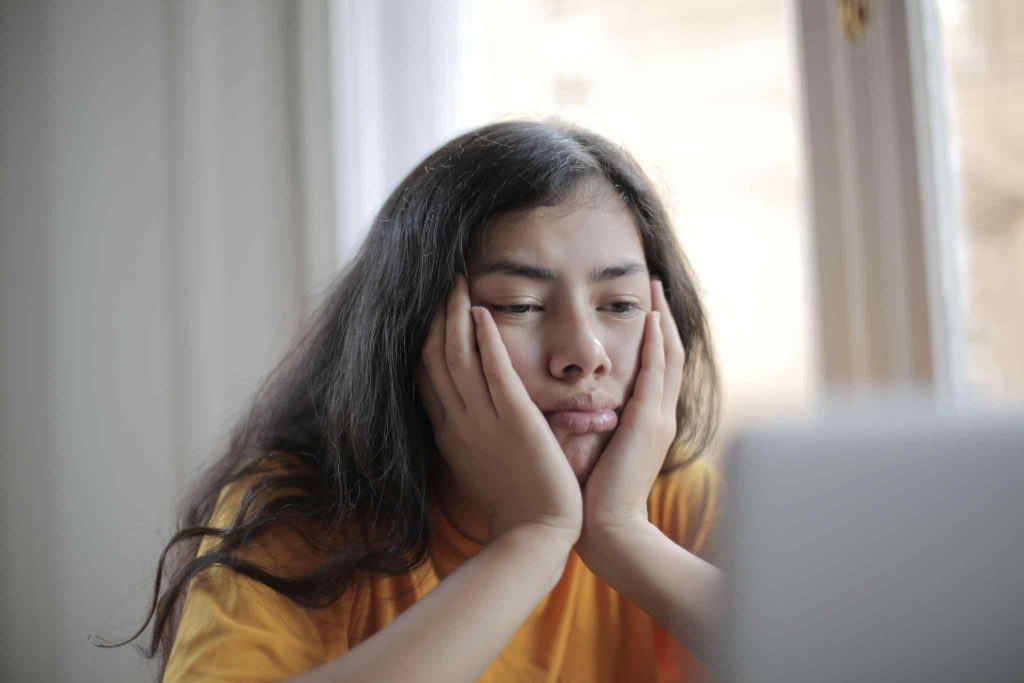The Surprising Link Between Sedentary Lifestyle and Anxiety

In the last few years, I’ve seen more and more people going for remote jobs or staying at home rather than going out. I’m one of those people, and let me tell you, while there’s nothing wrong with having a stay-at-home job, being a couch potato can negatively impact your well-being. Not living an active lifestyle is not only harmful to your physical health but also poses a significant threat to your mental well-being.
An inactive or sedentary lifestyle can be defined as, “a lifestyle in which one is physically inactive and does little or no physical movement and/or exercise” Around the world, people are choosing to spend more time on sedentary activities or leisure activities than living a life with more physical activities.
And I get it. Most of our jobs require us to sit in front of a computer or at a desk, which leaves us with little to no time for movement exercises. The only activity we get is on our commute.
When you live an inactive or sedentary life, then it means that you have an unhealthy balance between your rest and exercise. While there’s nothing wrong with resting in your free time, too much inactivity can affect your physical and mental health.
Let’s explore how a sedentary lifestyle affects mental health and what you can do to manage a sedentary lifestyle and replace it with an active one.
Sedentary Lifestyle And Mental Health: Are They Related?

In a study published in 2018, researchers concluded that young adults spend more than 9 hours a day doing nothing but sitting. This puts their health at greater risk, increasing the risks of chronic diseases. Moreover, living a sedentary lifestyle can increase the risk of developing depression and anxiety.
The factors that can be considered here can include poor sleep quality, no physical exercise, stress, and low mood. When you fail to get a good rest at night or are too stressed, then it can lead to a lack of motivation and an increase in anxiety.
In another study published in 2020, it was found that there is an association between sedentary behavior and mental well-being among college students. It is believed that the relationship between lifestyle choices and mental health can be attributed to poor sleep. It was also found in the same study that sedentary habits also led to students developing anxiety, depression, and suicidal ideation.
Can Sedentary Lifestyle Cause Anxiety?
Researchers have found a surprising link between a sedentary lifestyle and anxiety. However, the research on the same is limited. Yet, it raises the question, “Can an inactive lifestyle increase anxiety?”
It is believed that frequent screen time or spending more than needed on entertainment such as playing video games can increase your brain activity and at the same time, so does your anxiety. Spending too much time sitting in front of a screen can affect your sleep quality and increase your stress levels, leading to an increased risk of anxiety.
Now, there’s another theory that explores the link between a sedentary lifestyle and anxiety. Regular periods of inactivity can set off a domino effect, worsening your health. It is believed that sitting for a long time can cause diabetes and other health conditions, further worsening your mental and physical health.
However, that’s not all. Experts believe that anxiety can also cause you to develop an inactive lifestyle. When you experience the symptoms of anxiety, you may struggle with catching up on your sleep and may have low energy and motivation, causing you to focus less on physical activities.
Let’s not forget that our emotional and mental health is firmly connected with our physical health. Engaging in physical activities can help you increase confidence in yourself, improve your mood, and even make better social connections, eventually reducing the symptoms of your anxiety and depression.
Below are some quick tips you can follow to manage your inactive or sedentary lifestyle;
Tips to Live an Active Lifestyle

Even if you’re currently living a sedentary lifestyle, you can still take active measures to manage your inactivity and live an active lifestyle. Here are some tips for you;
1.Take Breaks To Move
The first thing you need to do is make sure you take at least 10-15 minute breaks every hour to just move. You can do some stretching, dance a little, walk around, jog in your place, or play with a pet. Anything that makes you get up and move. If your job requires you to work at a desk or in front of a computer for long hours, then consider getting a standing desk.
2.Add Exercises to Your Routine
Exercise is important and getting a 30-minute workout in your routine is not a hardship. Just half an hour of exercising can help you reduce your stress and get rid of a sedentary lifestyle. Also, getting regular exercise can help you improve your mood and reduce stress as well as anxiety symptoms. If nothing else, just walk for 30 minutes every day.
3.Don’t Rush And Start Small
If you haven’t been living an active lifestyle yet, then know that you don’t have to rush it. Start small and start slow. Rushing into an active lifestyle will not help you but only increase the pressure. Here are some things you can do to start small;
- If you commute to your work by car or bus, then try to get off or park a little farther away than your usual spot
- Skip using the elevator and consider taking the stairs
- Walk your dog an extra lap, or
- Do some gardening
4.Ask Loved Ones to Join
You don’t have to do all of it alone! Ask a loved one to participate in these activities with you. This will also allow room for social development. So go ahead and ask a family member or friend to do these activities with you. If not, then you can ask them to motivate you or encourage you to stick to an active routine.
5.Set a Goal to Work Toward
Having a goal to work toward can also help you stay on track and motivated. Try to set a realistic and specific activity goal to work toward. If your goal is not easily achievable, then you won’t feel motivated, so make sure you set an attainable goal. Here are some examples;
- Walk 15 minutes, three times a week
- Attend an aerobics class or yoga class, once or twice a week
- Run for 10 minutes every day
You Got This!
Living an inactive or sedentary lifestyle can negatively affect your mental as well as physical health. Sitting without doing any physical activity can also increase the risk of developing anxiety, depression, and other chronic disorders. While there isn’t a clear idea of what causes the association between a sedentary lifestyle and anxiety, there is evidence that suggests poor sleep quality, stress, no physical activity, and lack of motivation can be some of the causes.
There’s nothing wrong with resting or participating in leisure activities, however, not having a healthy balance between rest and an active lifestyle could lead to poor mental health and well-being.
If you’re struggling to find a healthy balance in your life between rest and activities, then it is recommended that you speak to a professional for help or support.
Get 20% Off on Betterhelp Appointment
I hope this article helped you understand the link between a sedentary lifestyle and mental health and how you can live an active lifestyle. For more, you can leave us a mail at info@calmsage.com or connect with us on our social media.
Take Care and Stay Safe




















